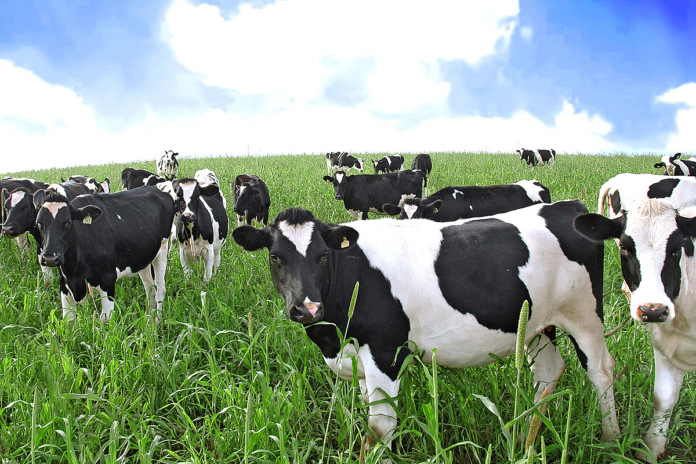In this article, John Greaney, Teagasc/Aurivo Joint Programme Dairy Adviser, provides breeding tips for dairy farmers, heat detection, BCS, problem cows and the management of later calving cows.
Farmer’s focus now turns to getting prepared for breeding, as the calving season begins to quieten down on many enterprises nationwide.
Management of the herd in the upcoming weeks prior to breeding ultimately has a detrimental effect on the success of the breeding season.
The objective on every farm should be to retain 80-82% of the cows currently in the herd to milk again in 2022.
In turn, the ideal replacement rate is 18-20% allowing the herd to achieve its full potential in terms of milk solids production.
Higher replacement rates prompt questions. The herd’s age profile will not support maximum output and the performance of the herd will be reduced.
The optimum replacement rate of 18-20% equates to 5.5 lactations/cow.
Ideally, half of the in-calf heifers coming into the herd should be replacing involuntary culls or females that fail to go back in-calf and the other 9-10% voluntary such as late calvers.
Rearing a dairy heifer replacement comes at a cost of close to €1,500.
Once a cow, which has been reared on farm, calves for the first time, it takes approximately 1.6 lactations before she has covered the cost of taking her through to calving at 24 months. Simple tasks over the next few weeks will ensure she stays a lot longer.
Heat detection, body condition scoring and tending to problem cows are management protocols all dairy farmers should be currently practising.
-
Breeding tips for dairy farmers – Heat detection:
Pre-breeding heat detection is beneficial to identify cows that are not cycling in advance of the mating start date (MSD).
One month before MSD, tail paint all milking cows red. Note the cows that have paint removed if you see them in heat. However, you should be more concerned about the cows that still have the paint.
Ideally, over 70% of the herd should be cycling by MSD.
-
Body Condition Score
Monitoring the condition score of cows before breeding is paramount. Cows are inevitably going to be in a negative energy balance as they reach peak lactation before hitting peak dry matter intakes. Consider putting thin cows (<2.75) on once-a-day milking.
-
Management of later calving cows
Having a compact calving period striving to have greater than 90% of the herd calved in February and March underpins profitable spring milk production.
However, nationally more than 25% of spring calving cows calf down after April 1st.
These cows will have reduced profitability due to higher feed costs and a shorter lactation period.
To avoid a further slippage in calving date and to try to get these cows back in calve as soon as possible, farmers could opt for;
-
Once a Day Milking (OAD)
OAD works on the principle of reducing body condition loss as milk production will be reduced. OAD post-calving will get cows cycling faster and increase conception rates to first service.
Farmers can return to twice-a-day milking once the cows have been served or delayed for three weeks post first service.
Cows on OAD will be served 50 days post-calving. Farmers, in this scenario, can often be ‘penny wise and pound foolish’ as the reduced milk yield is minimal (approx. €50-80) in comparison to losing a cow out of the system.
-
Synchronisation:
Farmers must remember hormonal intervention isn’t a quick fix to achieving high reproductive performance levels if underlying issues exist within a herd.
Cows also need to be calved a minimum of 30 days before commencing any programme.
Figure 1. Outlines a fixed time AI synchronisation protocol for late-calving cows.

Submission rate will be 100% and the timed AI eliminates the requirement to detect these cows in heat.
The cost of the above programme ranges from €35-€40.
Dairy herds consistently achieving high levels of reproductive performance focus on doing the simple things right.
Now is the time to set reproductive targets for your own herd.
Placing greater emphasis on body condition score, heat detection and problem cows prior to the mating start date will ensure a successful breeding season for 2021.





